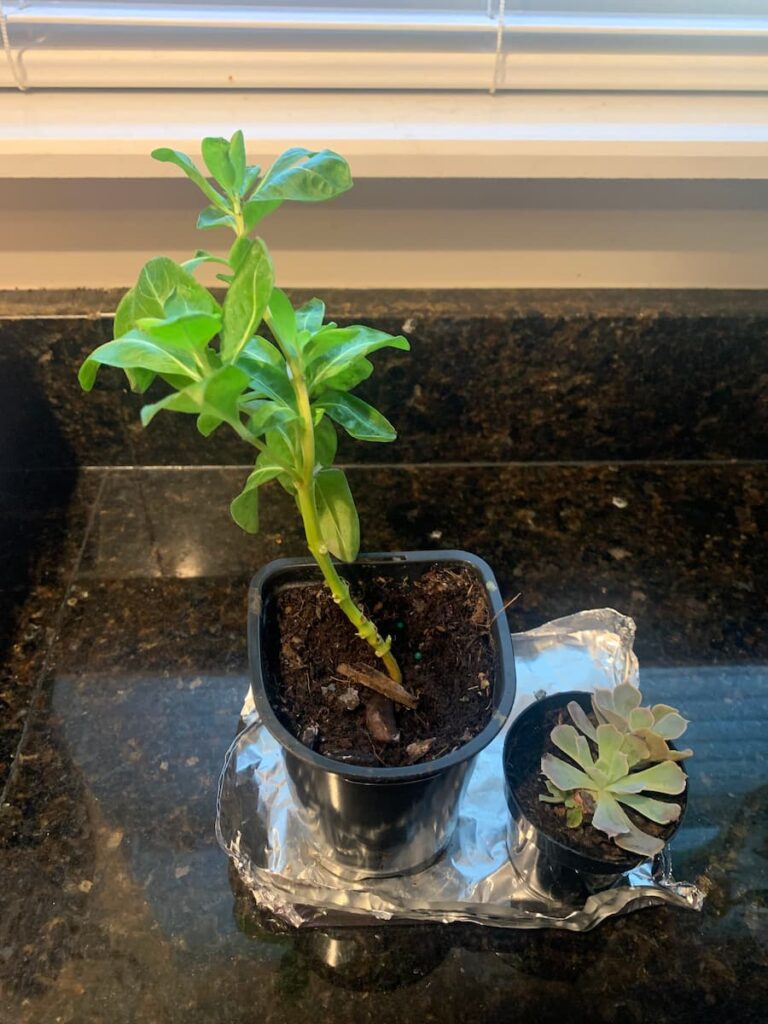My wife came home from work the other day with a couple of cheap clearance plants. She bought them from the local home-improvement store.
When she walked by my workspace, she said something to the effect of, “Here, see if you can bring these back.” And then she plopped the two poor little plants, barely hanging onto life, right in front of me.
I looked at these cheap clearance plants, glanced at the receipt, and noticed she had purchased these at 50% off their original retail prices. “Not bad,” I replied to her as I start perusing the plants to see what I had on my hands.
She bought a Vinca (Catharanthus roseus) and an Echeveria “Belen.” They’re two very different types of plants.
Vinca is an outdoor flowering plant grown like an annual throughout most of the United States. However, it takes off as a mounding and robust perennial where I live in Central Florida. Meanwhile, the Echeveria is a succulent usually grown as a houseplant indoors with comfy temperatures.
I knew these plants were going to need a lot of TLC (tender loving care, that is!) to help them stay alive. But I’ve brought plants back from the dead (or nearly so) before.
I was ready to help these two little ones hopefully enjoy a long life ahead!
Bringing Cheap Clearance Plants Back To Life
As you’d surmise, some cheap clearance plants have already passed onto the Great Garden in the Sky. And I’m not talking about out-of-season deciduous perennial plants that are nothing but brown sticks ready to pop back in the spring. I mean annuals that appear fried to a crisp due to heat stress or situations like that.
You can’t win ’em all, I guess.
But most of the plants I see on the discount racks look as if they could have a legitimate chance. They have good odds of coming back if given enough love and care.
I’ll never say you’re going to have a 100% chance of bringing every plant back to flourish again.
I’m batting better than .500 on this. But I’m certainly not guaranteed that every cheap clearance plant we buy is destined for a second chance at life.
I also know if I take the right steps in my pseudo plant triage center (A.K.A. my dining room table and a few handy garden tools and supplies nearby), I might give those poor plants a good shot at coming back from death’s door.
So, what steps do I take to save these cheap clearance plants that look dead or severely stressed? Surely every plant will require its own recovery steps. But here’s how I saved this Vinca and Echeveria, not to mention many other discount plants near me.
Step 1: Remove Dead Or Damaged Foliage
Before I do anything else to the plant, I remove all foliage that looks brown, wilted, or otherwise unhealthy.
This may mean giving your cheap clearance plant quite the haircut. But this is how you begin resuscitating the plant back to health so it can focus its energy on the healthy parts of itself.
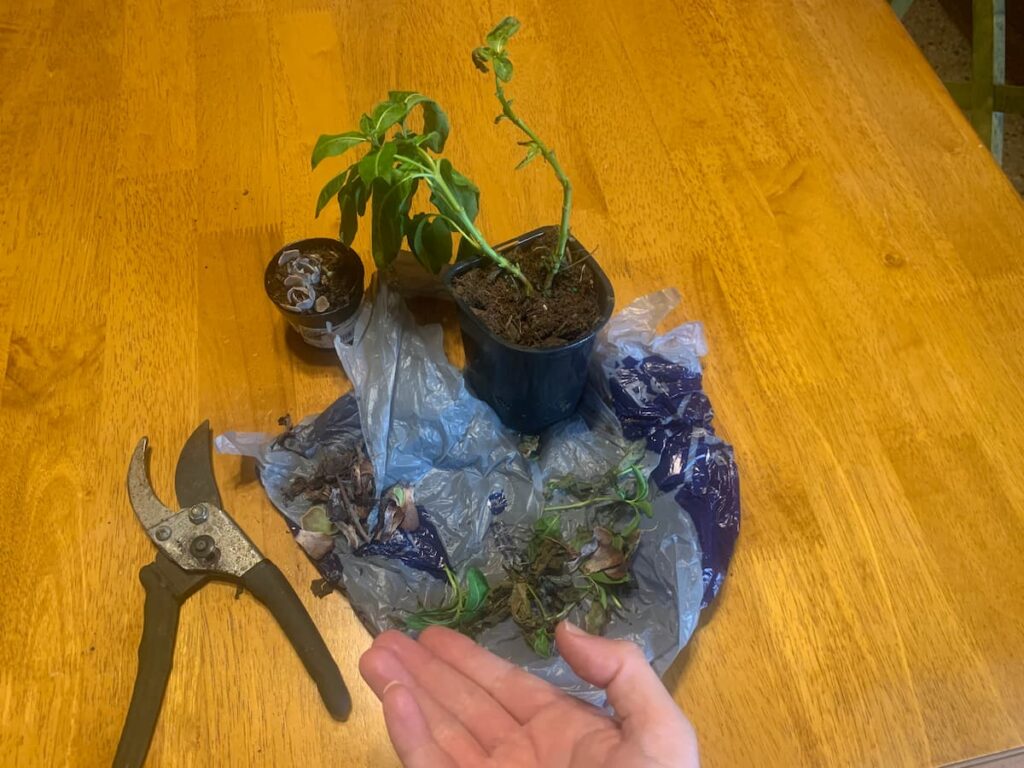
I used bypass pruning shears to gently cut away the dead leaves and stems of the Vinca.
But the Echeveria is far smaller and more delicate. So instead of using shears on that succulent houseplant, I pinched away the wilted leaves with my fingers.
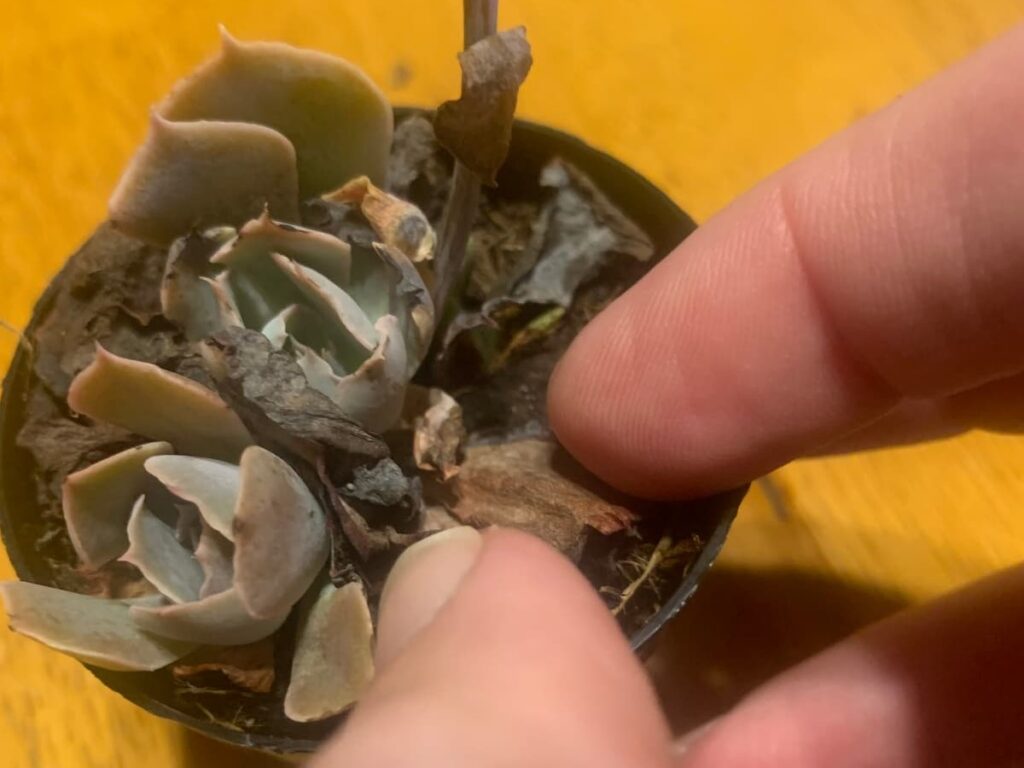
Step 2: Give The Plant A Nutrient Boost
With the decaying foliage removed, my next step was to give these plants a veritable B-12 shot. This meant breaking out my Jobe’s fertilizer spikes. I’m not an endorser of Jobe’s or anything. They’re just my favorite type of houseplant fertilizer.
Now, the Vinca is destined for a life outdoors — not as a houseplant. But I feel the Jobe’s houseplant fertilizer is strong enough to give this young, vulnerable plant a nutrition boost without overwhelming it with something stronger.
I took just one Jobe’s fertilizer spike and split it one-third, two-thirds. Then I placed the one-third spike into the smaller Echeveria pot; the two-thirds spike went into the soil of the Vinca pot. I didn’t put the spikes right next to the base of the plants, lest I damage the upper root system. But I placed the spikes close enough to the plant bases to ensure they were near the plant’s primary roots.
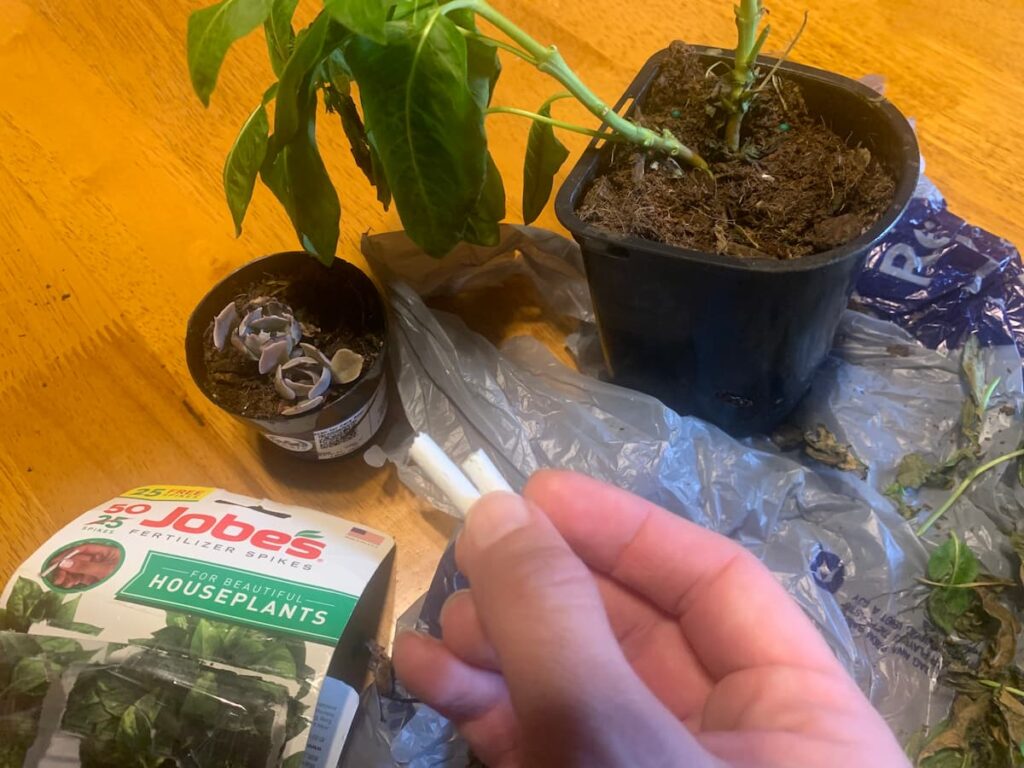
Step 3: Place The Plants In The Right Light Conditions & Water Them
Both my Vinca and Echeveria need at least six hours of sunlight a day. So, I knew exactly where I’d put them for now: on the kitchen counter near a south-facing window! The window has blinds that I can angle to filter this light somewhat, so I don’t scorch my rehabilitating plants. You’ll need to adjust where you put your rehabilitating plants based on their individual light needs.
Then I watered my cheap clearance plants for the first time. My wife and I have a little watering pitcher for our houseplants, and that’s what I used to irrigate these new additions to our plant family.
I moistened the soil of each pot until I saw a little trickle of water emerge from the base of each pot. That’s how I knew water reached all of the soil. Good thing I created a makeshift tin foil watering tray to catch the water from spilling onto the granite countertop!
I checked the soil every day to ensure they had the right moisture content. I kept the Vinca soil lightly moist. But the Echeveria doesn’t need to be watered until the soil feels dry to the touch.
Whatever plants you’re rehabbing be sure you know the watering guidelines and stick to their correct irrigation needs religiously.
One of the biggest gardening mistakes is overwatering plants!
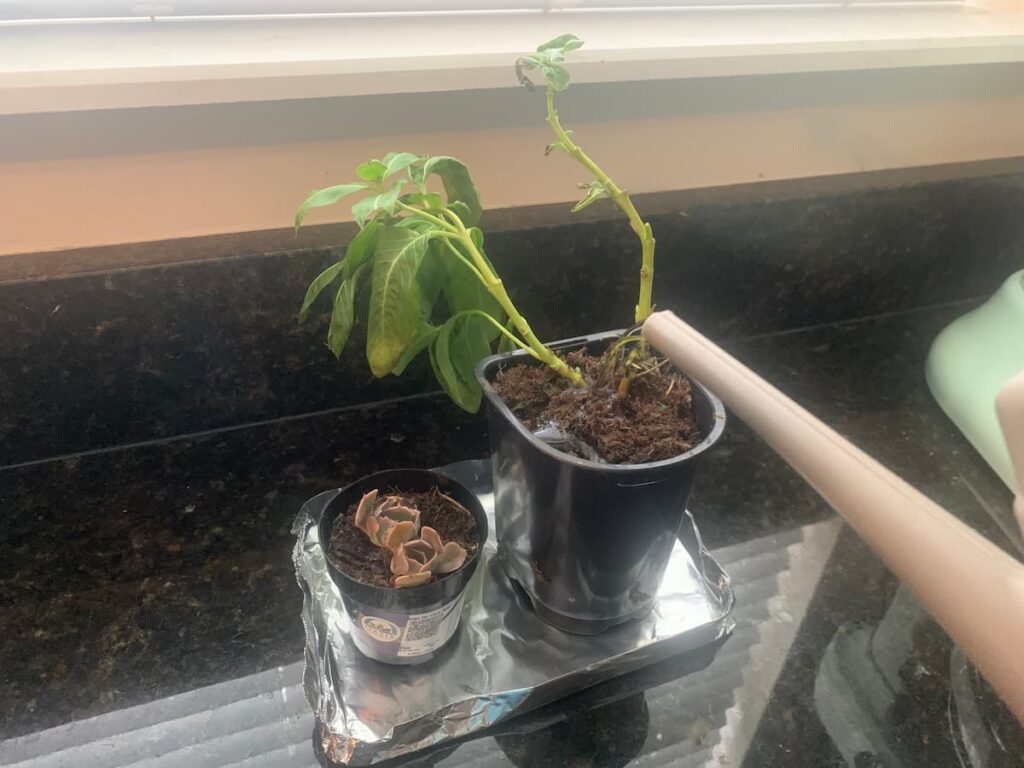
I kept the Vinca indoors until past two weeks to ensure it was thriving in a stable environment I can control. This would help it reach good health before I “released” it into the wild of our backyard!
The Echeveria is heading toward a permanent clay pot for the rest of its life indoors as one of our houseplants.
Yes, Virginia — Cheap Clearance Plants Are Worth Buying!
I’ll reiterate you’re not going to be able to save all of the cheap clearance plants you buy. Even the best veteran green thumbs out there (of which I’m not) will lose some of the discount plants near death they tried saving. But it’s my unscientific opinion that most of the cheap clearance plants I’ve seen are not lost causes. They’ll just usually need a lot of work to bring them back to vitality.
Let me also say this: not all discount plants are facing health issues. Sometimes garden centers put perfectly healthy plants on clearance racks due to inventory changes. This usually occurs near the end of a growing season. You’re likely to find some pretty good deals near the end of spring — like Memorial Day weekend.
You’re also bound to find clearance plants near you around Labor Day weekend; that’s when garden centers prepare for selling cool-weather plants, or when big-box stores make way for holiday decoration inventory. And goodness knows some stores carry a lot of that type of merchandise. But that’s OK by me — it puts me in the holiday spirit!
All things considered, I believe buying cheap clearance plants is totally worth it. And I advise you try it. If you can save even one of these plants, it will boost your confidence as a gardener. And it might just help save a vulnerable plant in need of your TLC.
You can do it!
